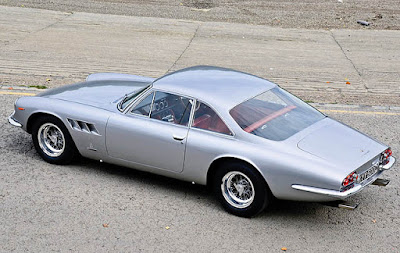ONE-OFF Today, French-born American industrial designer Raymond Loewy is remembered as the Father of Industrial Design, who was involved in many industries including automotive between the 1930s and the late 1950s with his streamlined design style flourished which sometimes seemed outlandish and unusual to the common pepole.
 |
| 1941 Loewy Lincoln built designed by Raymond Loewy, built based on the 1941 Lincoln Continental convertible and bodied by a Philadephia-based coachbuilder named Derham Body Co. (Picture from: Hemmings) |
 |
| 1941 Loewy Lincoln featured many unique styling touches, including shortened front fenders, redesigned grille and hood, custom bumpers, removable Plexiglass top, opera windows, and a fin below the trunk. (Picture from: Coachbuild) |
Then he purchassed a Lincoln Continental Convertible which he would use as his dream car basis. Why was the choice fell on those American car figures? Because, he tought that the Continental convertible was a classy and stylish car at that time. Although in the process of later work, the car should lose all its elegance, which was replaced by an agglomeration of eccentric and uncommon shapes.
The 1940s dream car designed by Raymond Loewy is built on a chassis taken from the Lincoln Continental also keeps its V12 engine as its drivetrain. Then to realize his car, then he sent those Lincoln's chassis dan engine to the Philadelphia-based coachwork named Derham Body Company to construct the car bodywork under the style created by himself and called as the 'solid-top Victorian" style.
 |
| 1941 Loewy Lincoln featured many unique styling touches, including shortened front fenders, redesigned grille and hood, custom bumpers, removable Plexiglass top, opera windows, and a fin below the trunk. (Picture from: PBase.com) |
A letter from Derham confirmed their ability to "Rework the lower windshield, rework door glass in keeping, make town car style canopy over front seats, upholster the solid top interior above belt line in cloth, reworking front fender design similar to style indicated on sketch, close up standard radiator vents and re-arrange...with extras added. Furthermore, the car's interior is actually quite pleasant, all-surfaces of seats inside the cabin are covered by the light colored fabrics make the rear feel open, and of course, the front resembles the Clairière Viosin.
 |
| 1941 Loewy Lincoln's interior has a gold-plate dashboard accents, and all-surfaces of seats inside the cabin are covered by the light colored fabrics make the rear feel open. (Picture from: Desert-Motors.com) |
As quoted of Hemmings, after it was finished, he liked it very much. It was also stated that he had another, identical aside from paint, built for his first wife, Viola. We thought, that these Loewy Lincoln cars were built as many as 2 units with the same shape but different colors where each car was later used by Loewy and his first wife. Unfortunately, the Viola's car disappeared many years ago, but the original Loewy survived for refurbishment in 2007, and was sold for $451,000 by the Gooding & Co. in an auction event of the 2008 held in Scottsdale.
 |
| 1941 Loewy Lincoln's body was lowered six inches over the frame and the special top helps to create one of the most elegant Lincolns of the prewar era. (Picture from: Desert-Motors.com) |
However in between 1946 to 2007, the car underwent several changes. Early photos showed a series of tangential rings forming the grille, dual antennas on the engine cover, distinct bumpers with the overriders and, most importantly, Continental-style spare tires on the rear, with another unique rear bumper. Neither of them survived today. In contrast, the small front grille features one center ring with Studebaker-style bullets, and the spare is completely gone - in its place are the odd, shortened center fin and reworked rear valance.
Given Loewy's habit of tinkering with his designs and longevity, it's
possible that he's the one who changed it, not the next owner. Today the Loewy town car resides as one of the Richard Driehaus Collections. Wanna see the next eccentricity of Raymond Loewy on Lancia, Cadillac, Jaguar, and BMW. *** [EKA | FROM VARIOUS SOURCES | CONCEPTCARZ | FABWHEELSDIGEST | HEMMINGS ]
Note: This blog can be accessed via your smart phone.



























